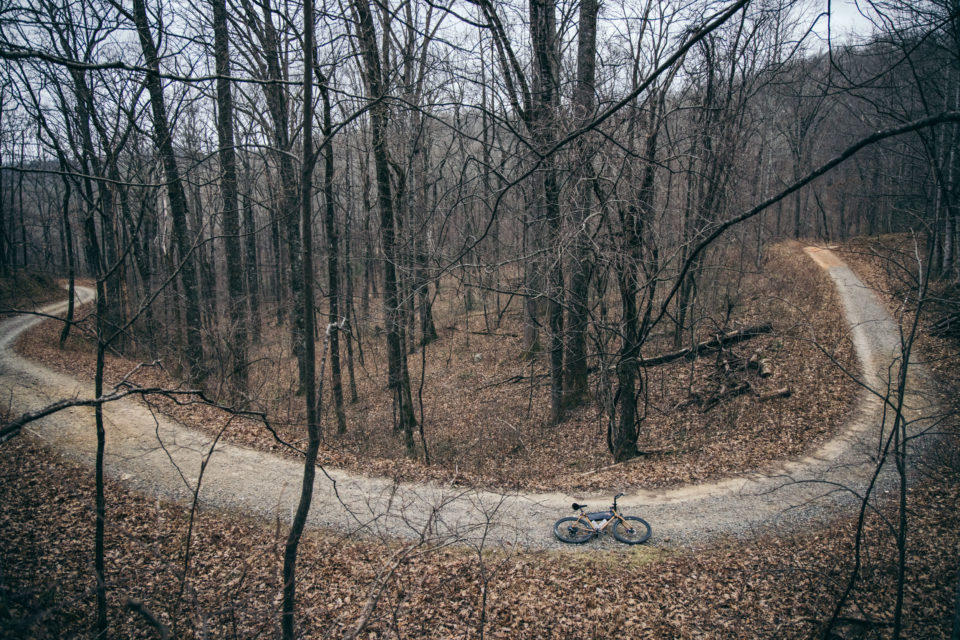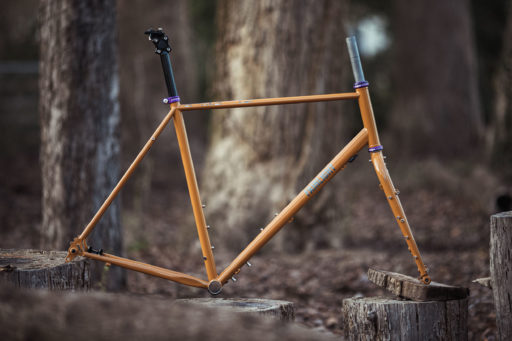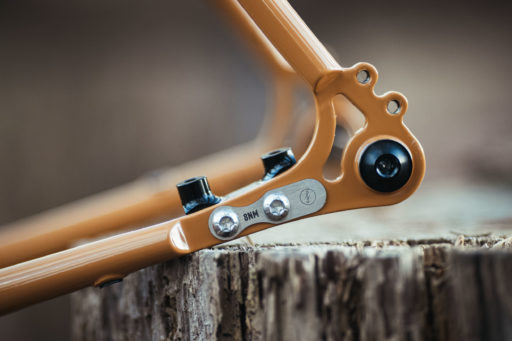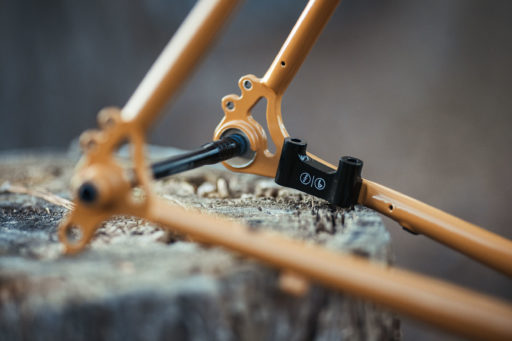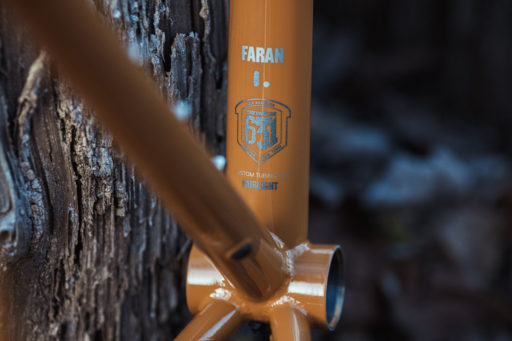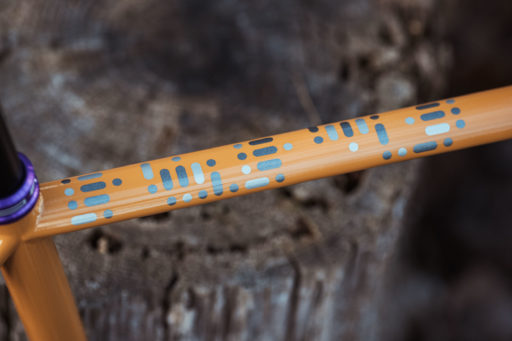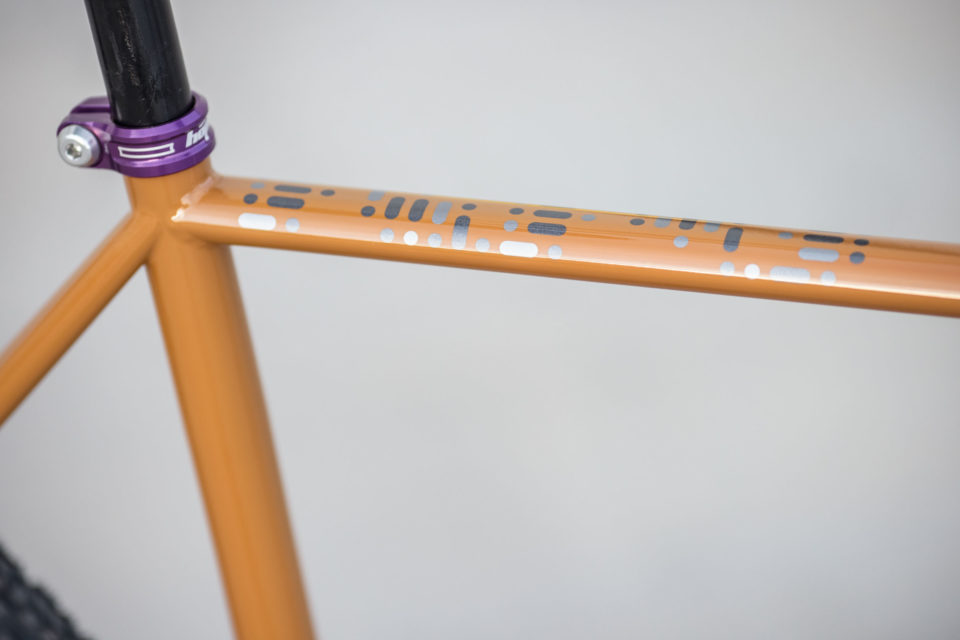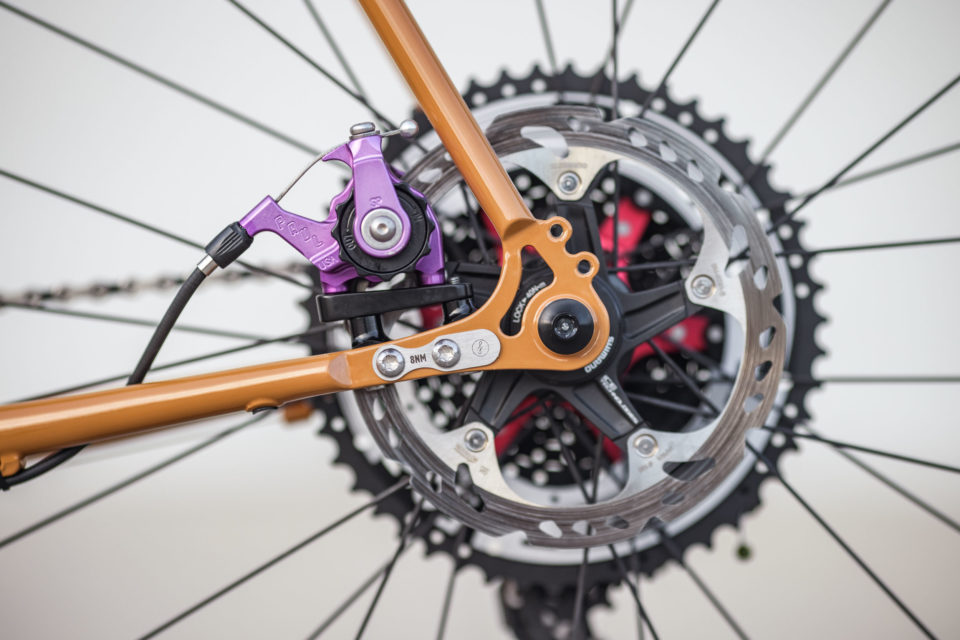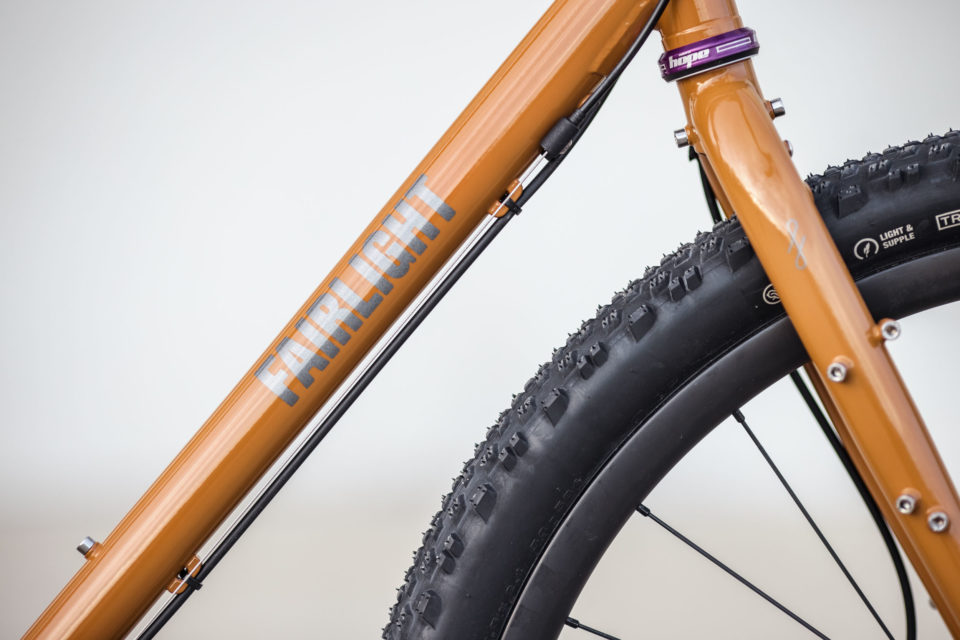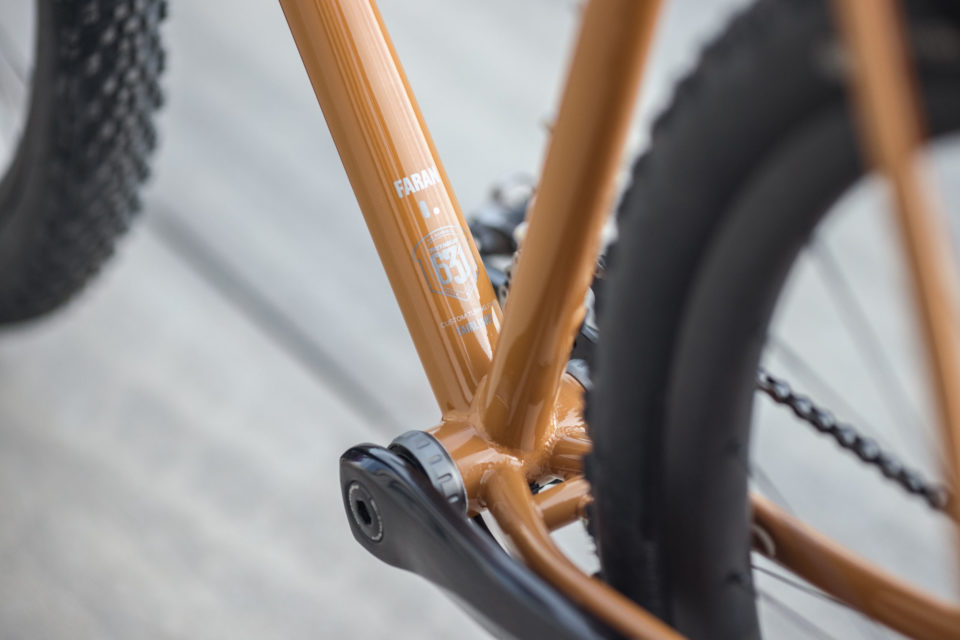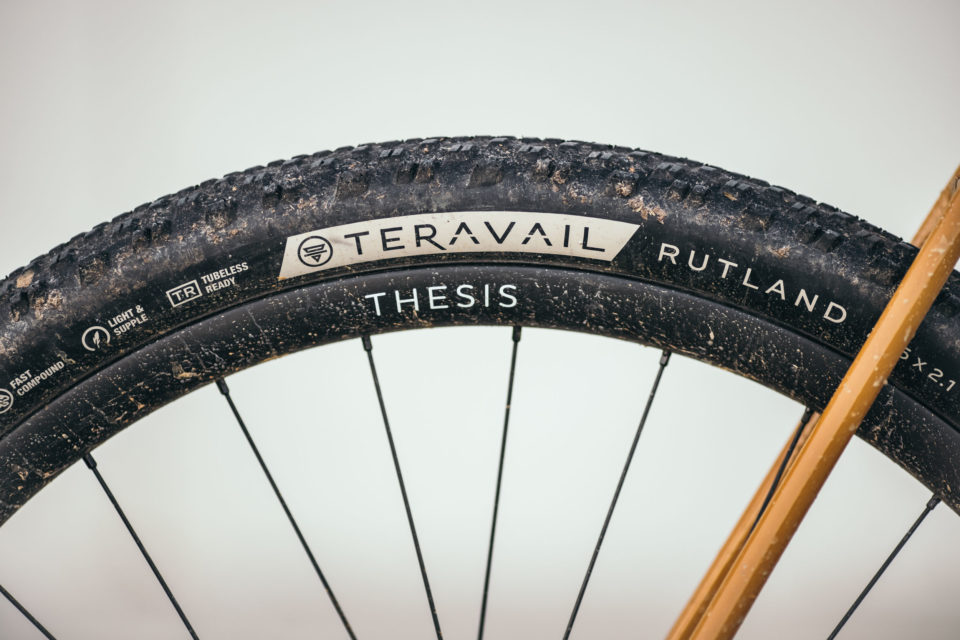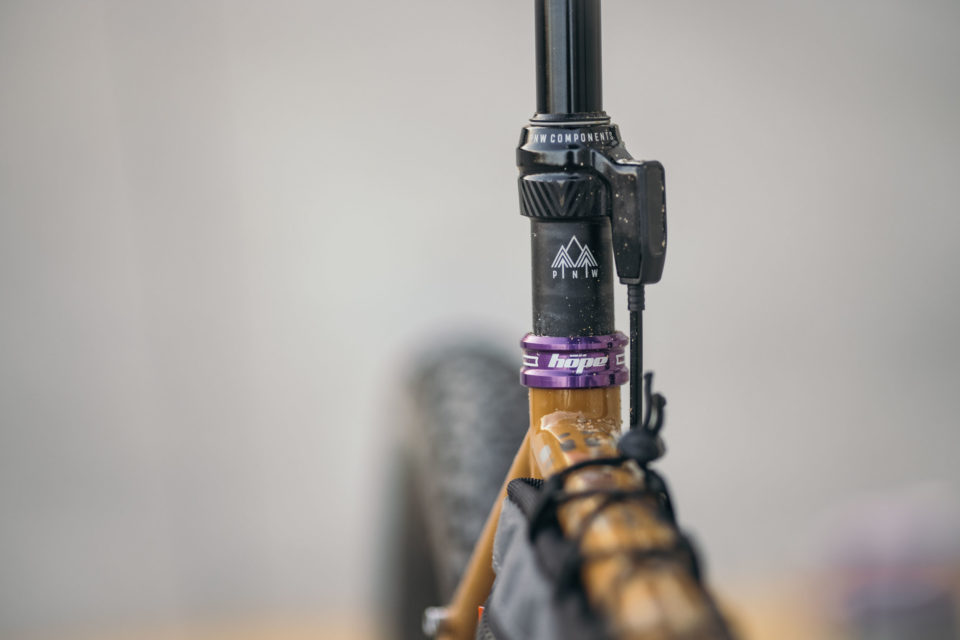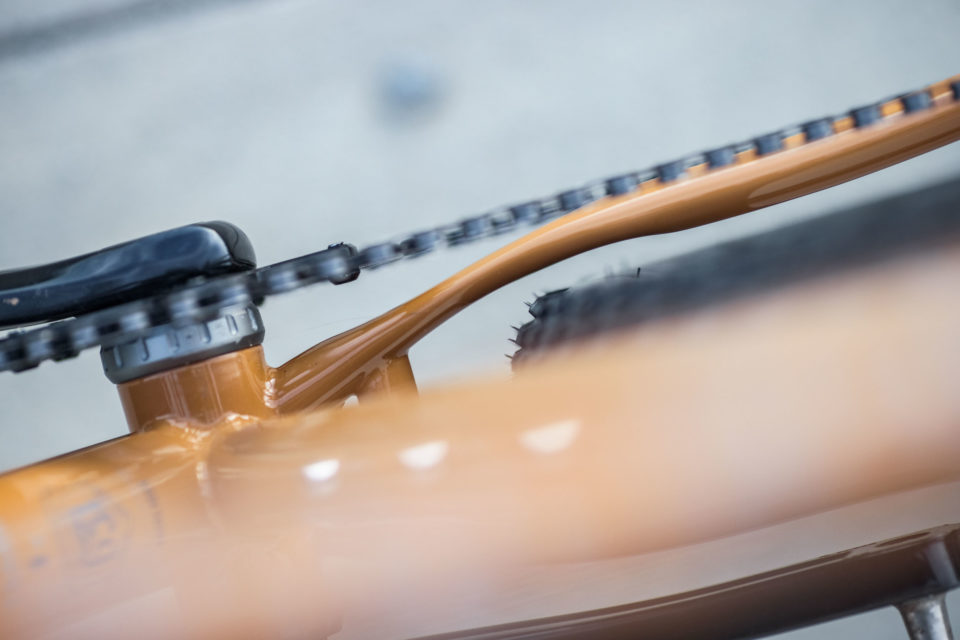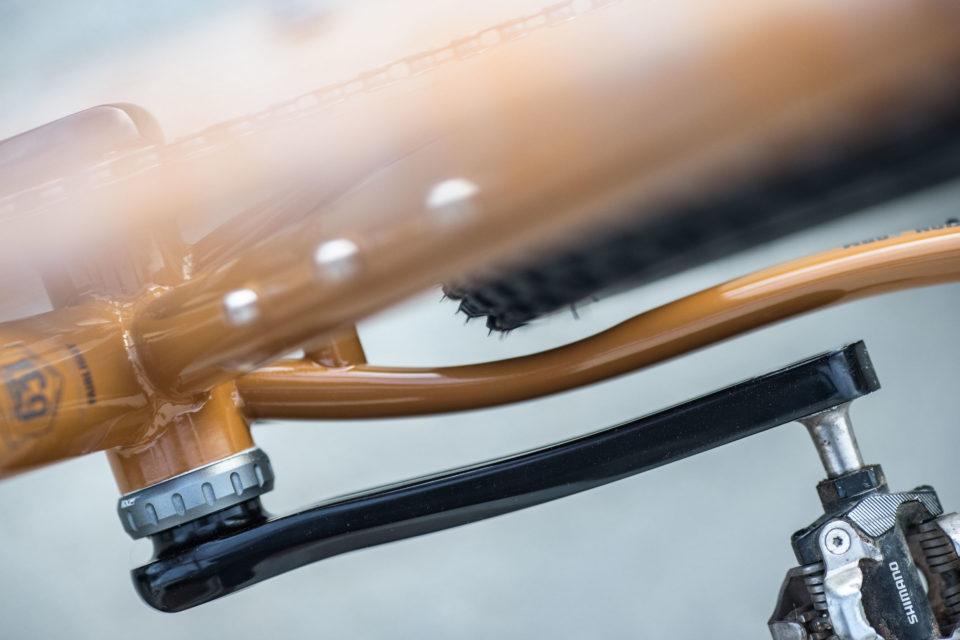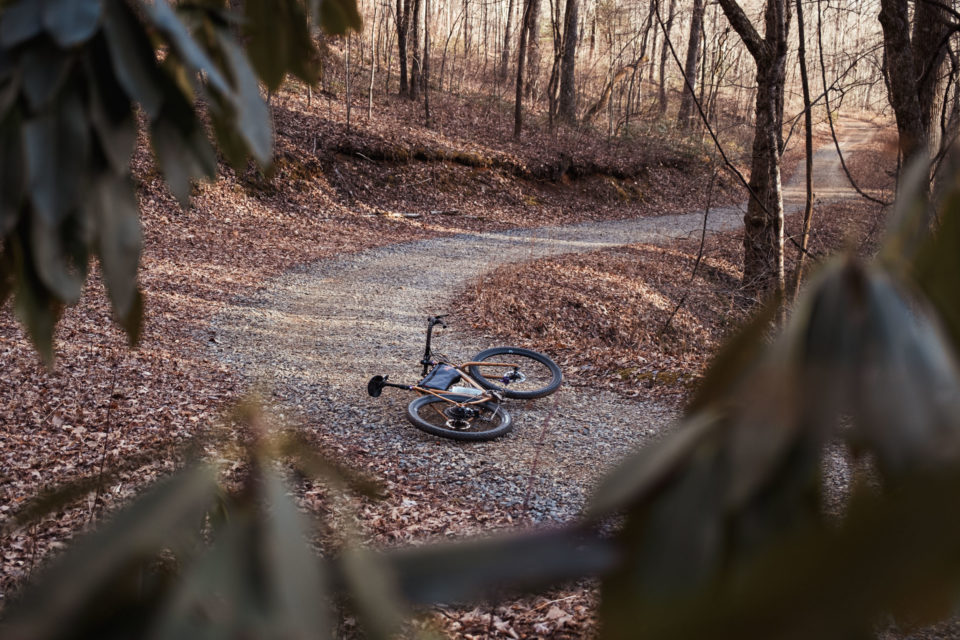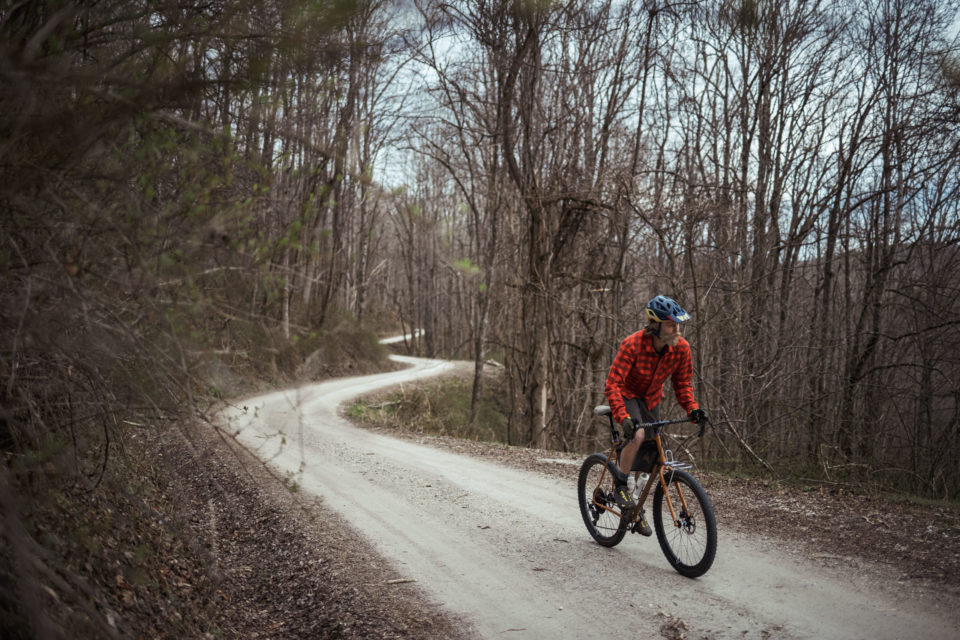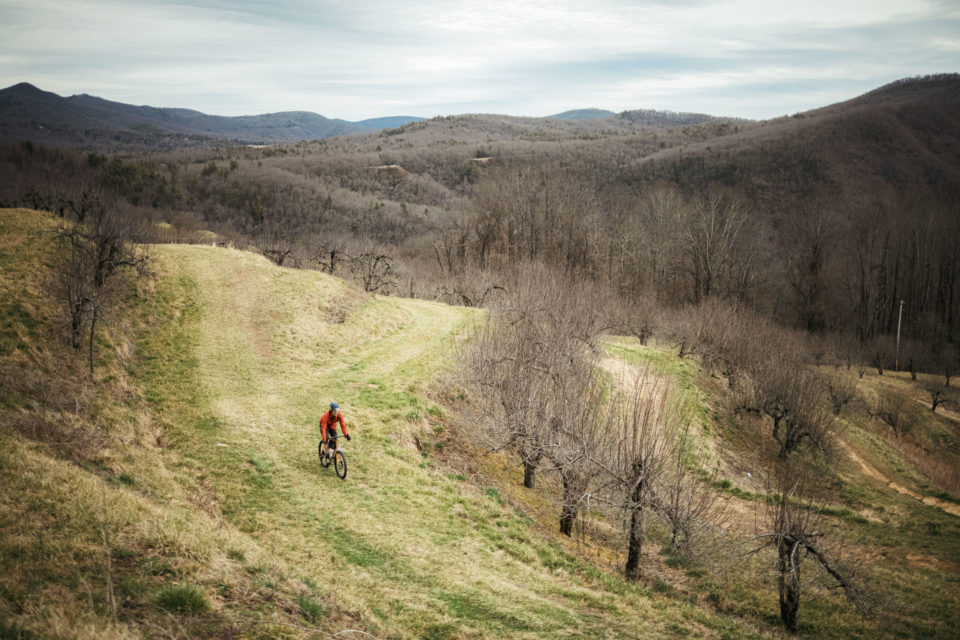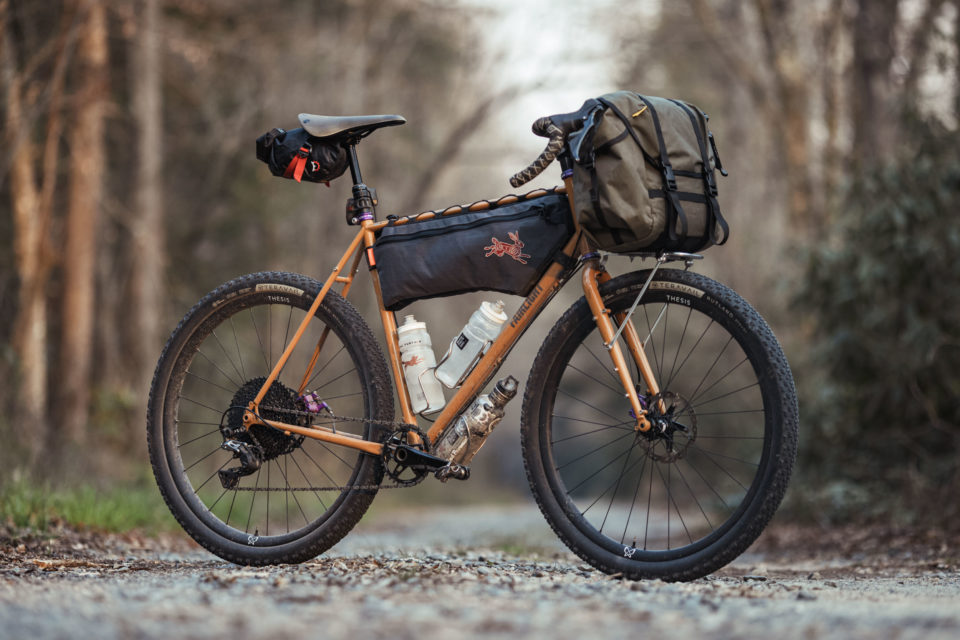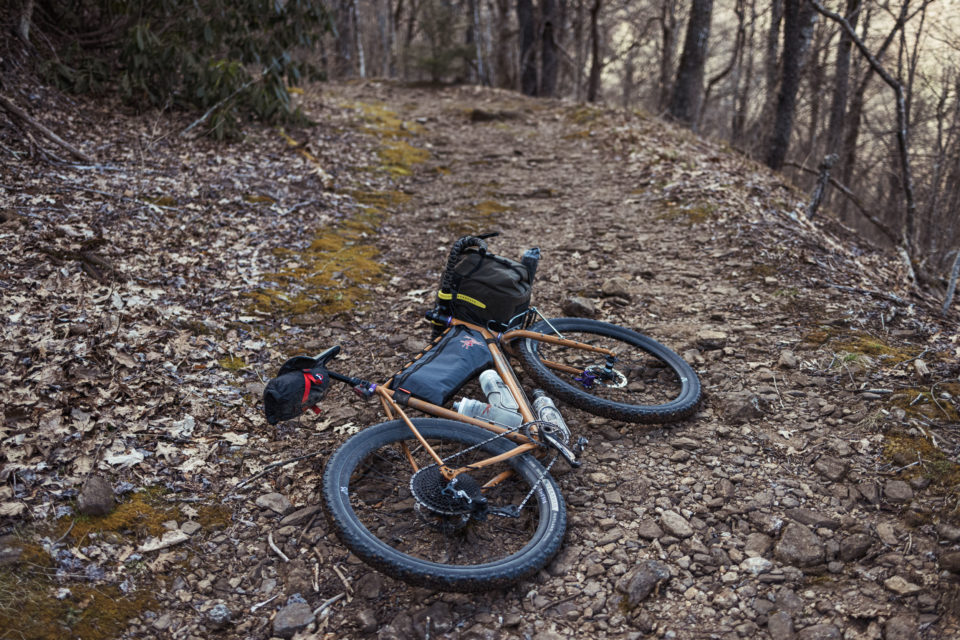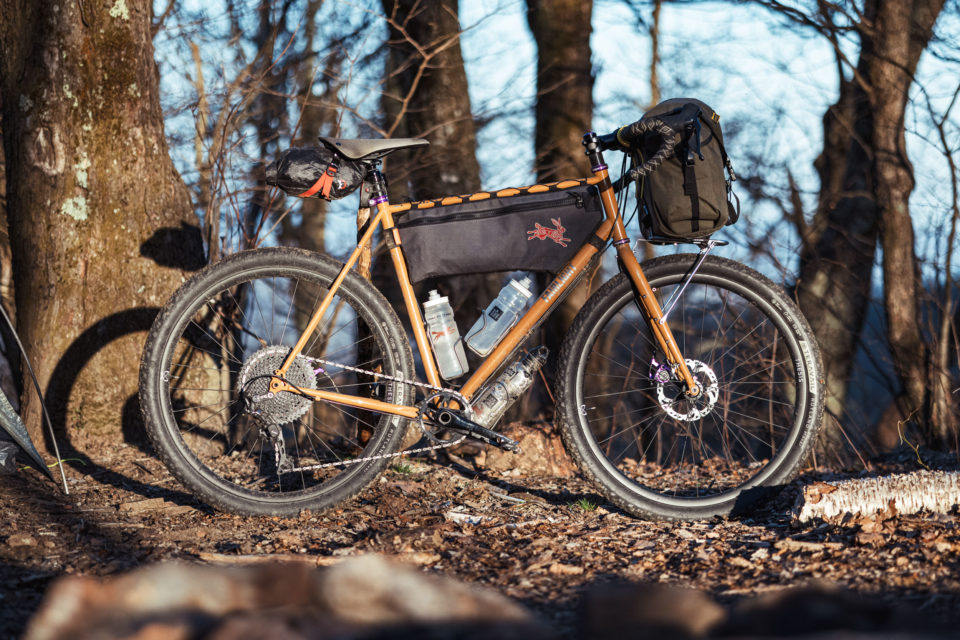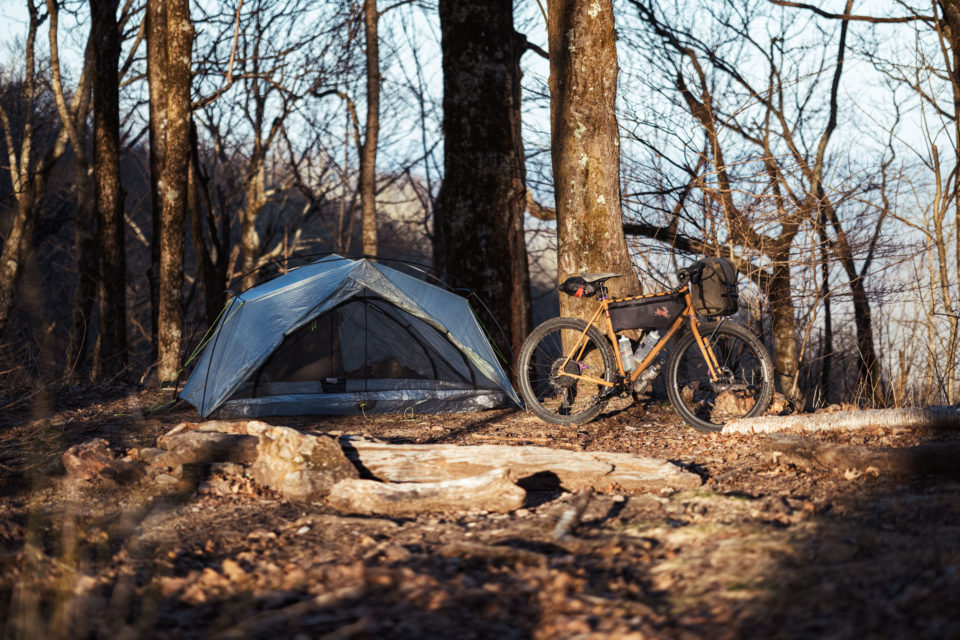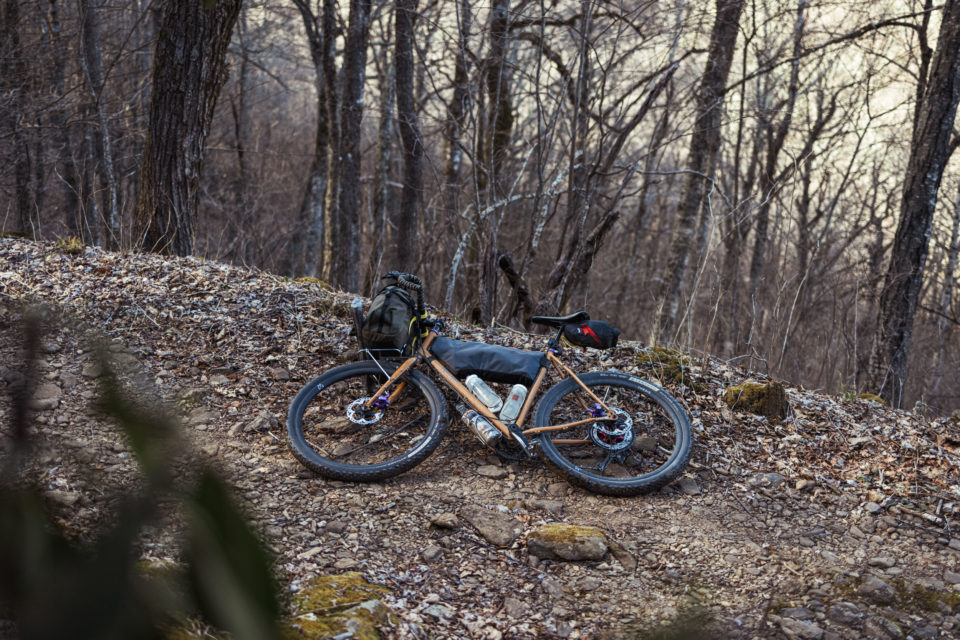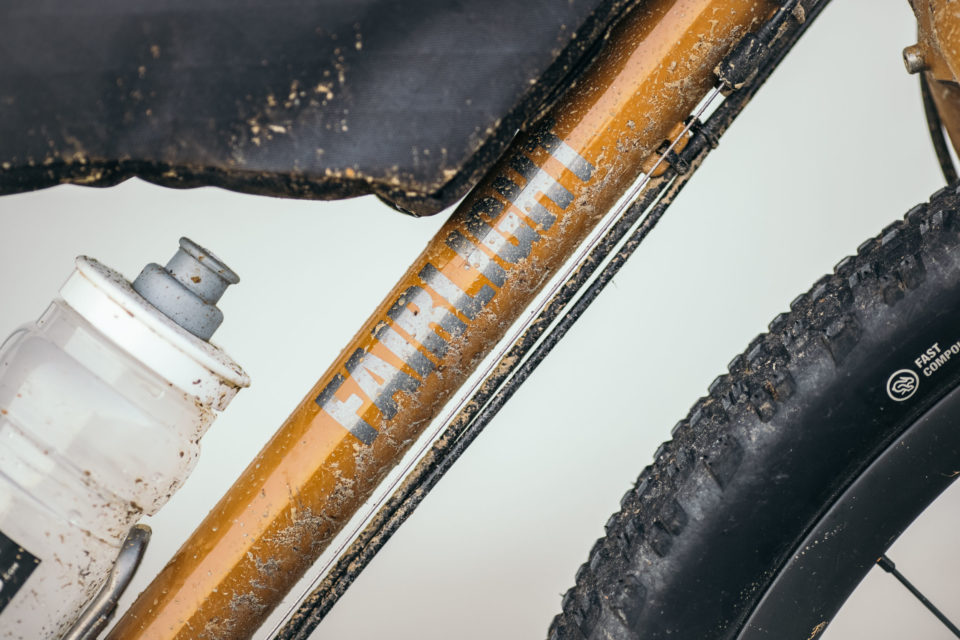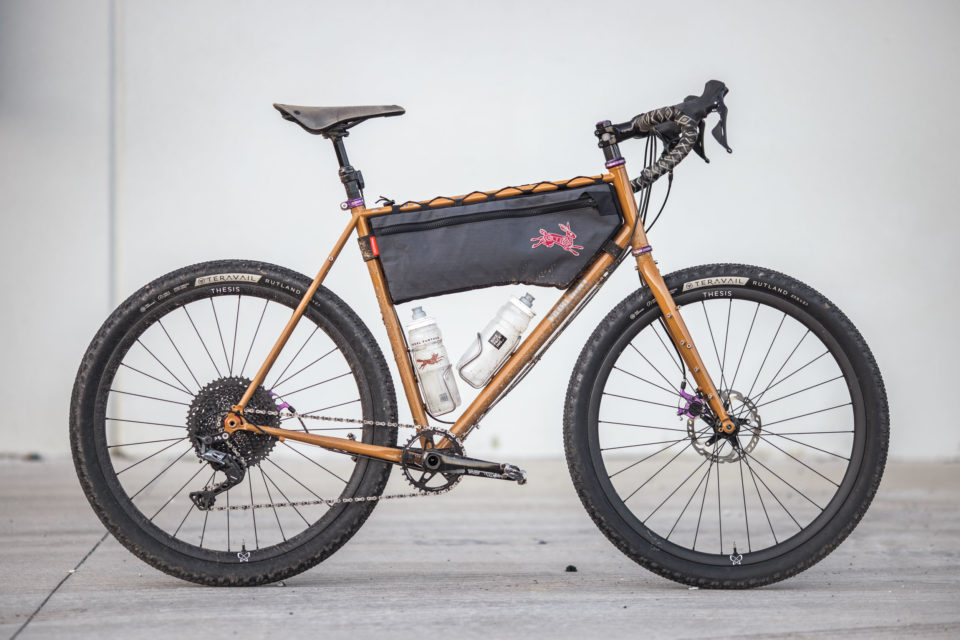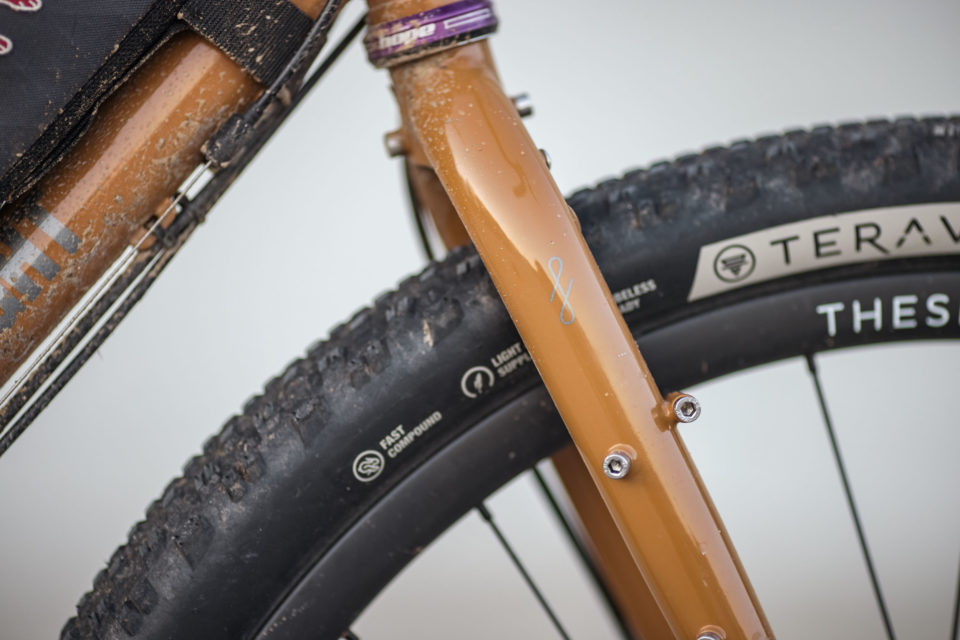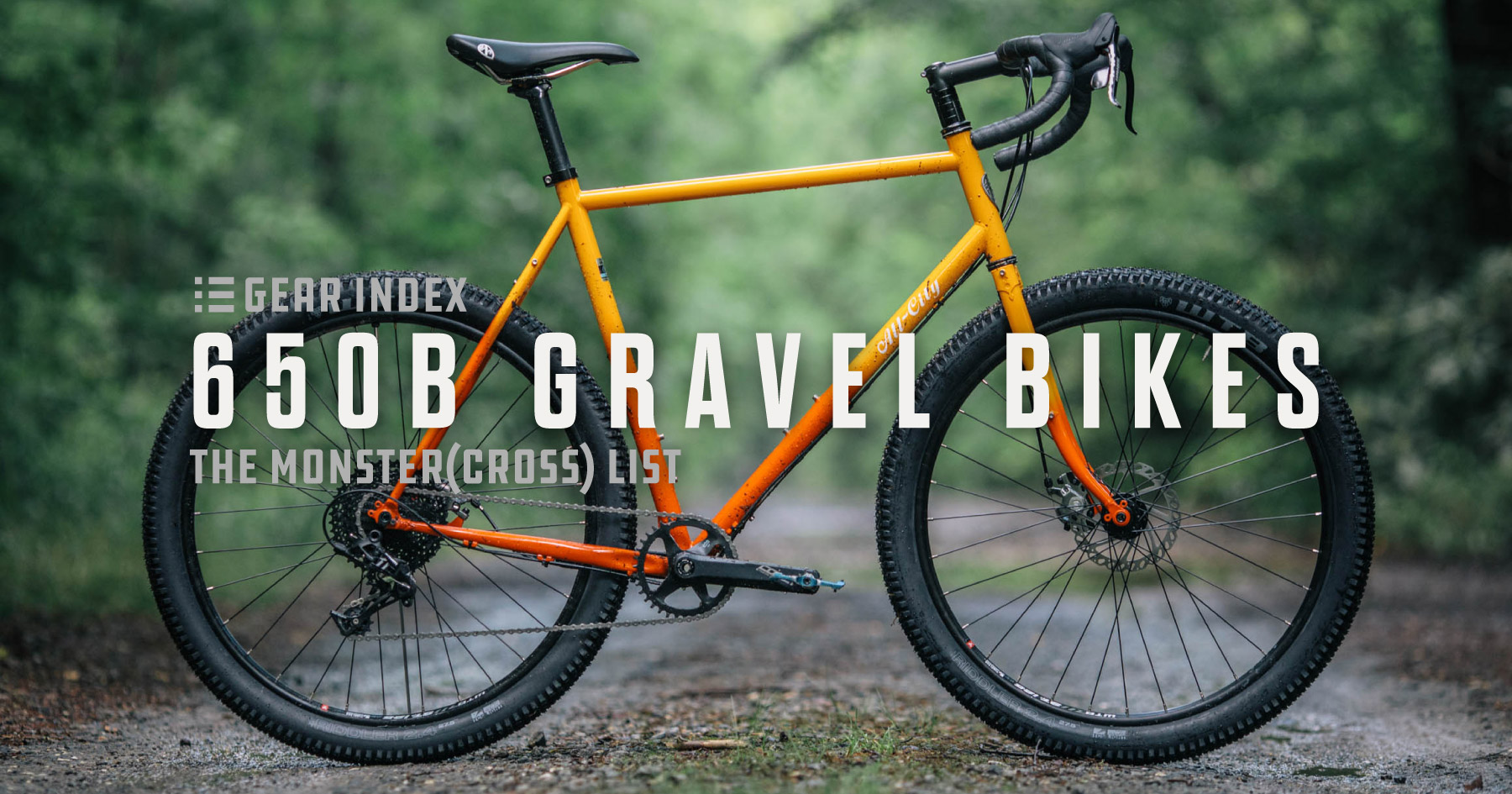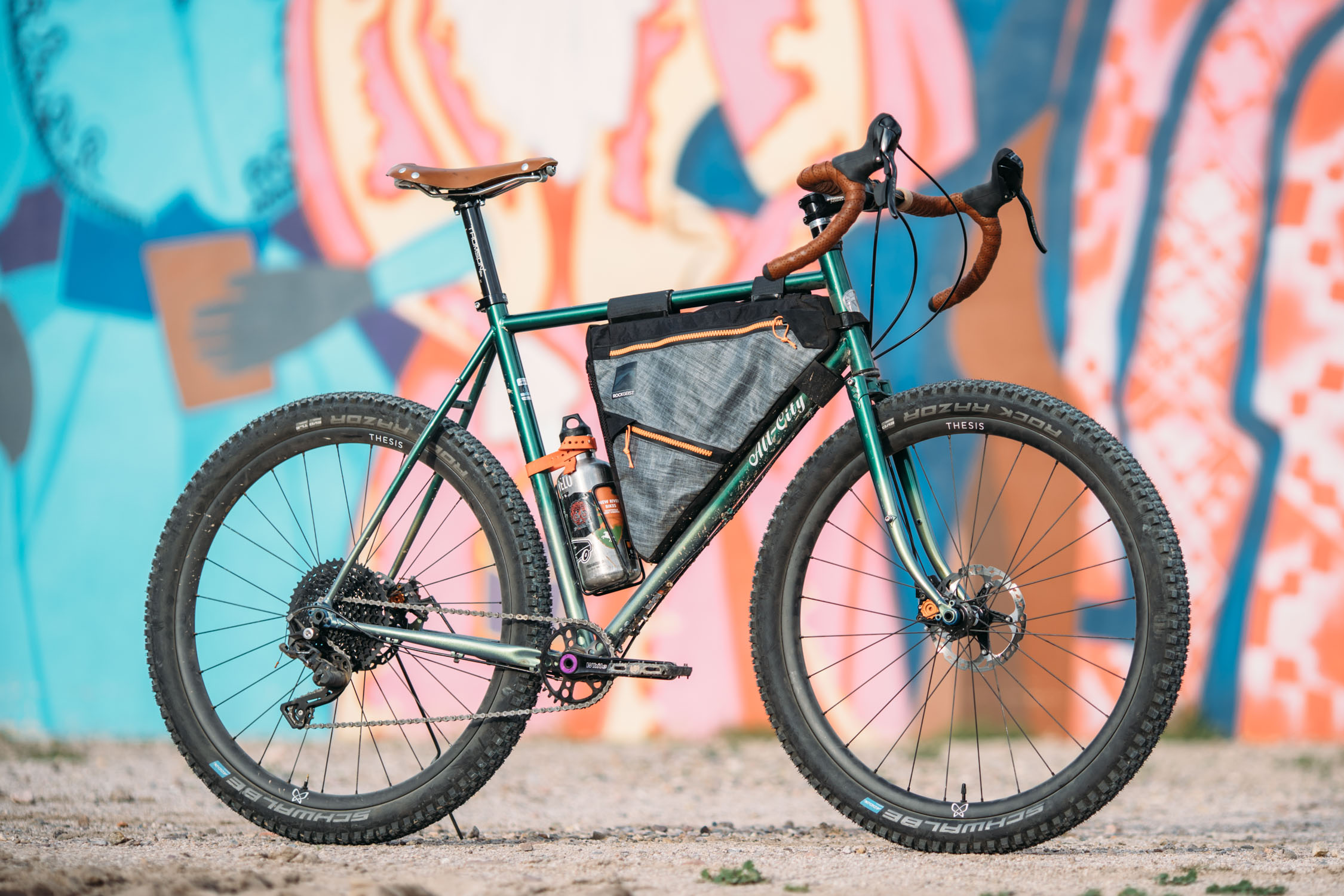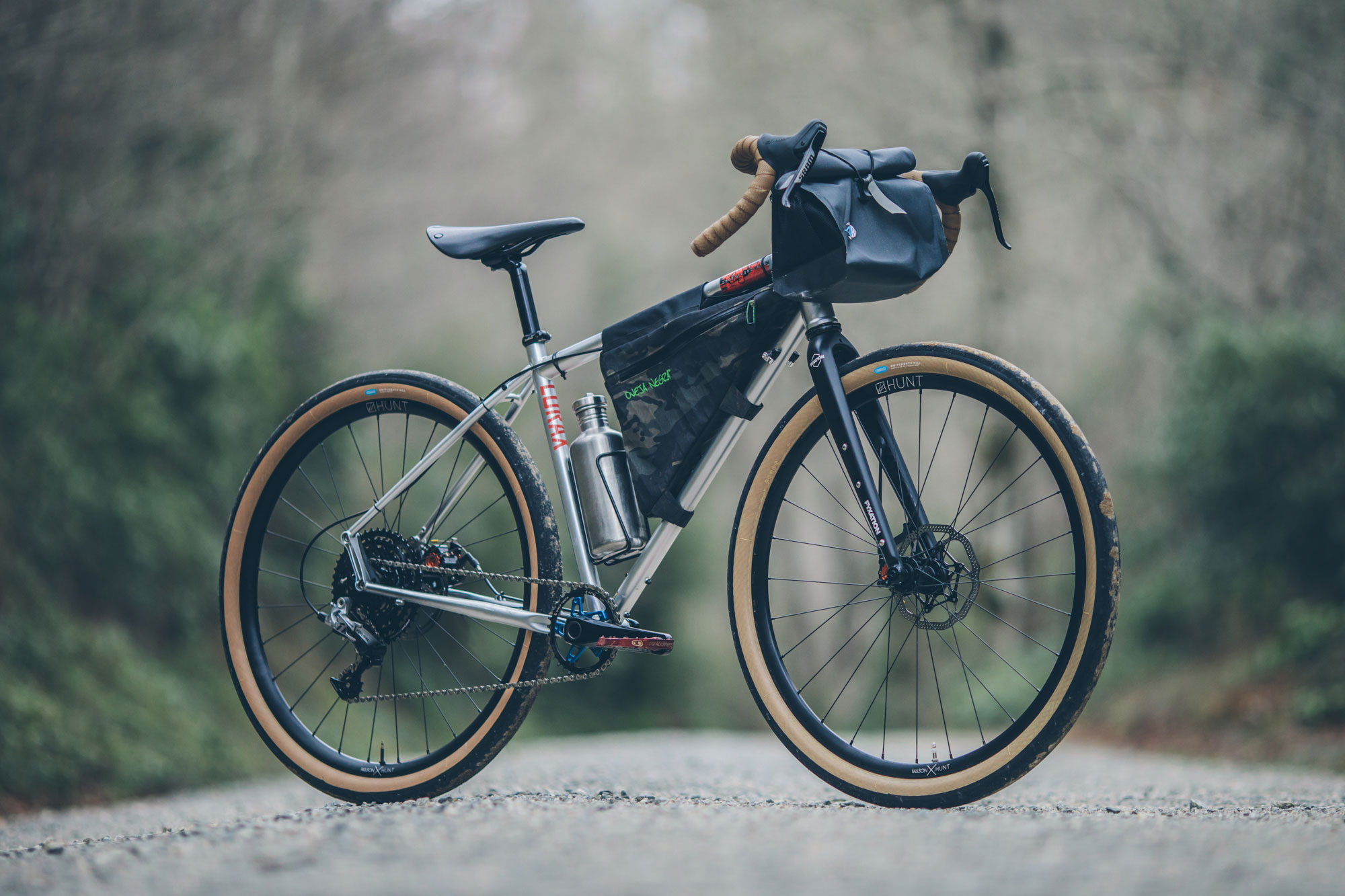Fairlight Faran 2.0 Review
Share This
The Fairlight Faran 2.0 packs a ton of utilitarian features (and a few surprises) into a European-made steel frameset with incredible attention to detail. We had the chance to put one through its paces while gravel riding, bikepacking, and everything in between for this in-depth review.
The first time I heard of Fairlight was back in 2018 when the London-based company announced an update to its Secan gravel bike, one of three models in their lineup. I was intrigued, but also remember thinking to myself, “An off-road drop-bar bike with a 77mm bottom bracket drop… that’s crazy.” However, I’ve come to realize over the years that with bikes, you can’t always judge by the numbers. And, as it happens, I’ve actually come to appreciate extra-low bottom brackets, even on chunky stuff—but I’ll get to that later. Fast forward a few years and Fairlight released the Faran 2.0. Based on the meticulous attention to detail they put into the bike—as evidenced in its 73-page design notes document—not to mention an excellent docket of frame specs, I was hellbent on trying one. Fairlight sent a frameset that I was able to build to suit my preference for this review.
Before I start dissecting the bike, let’s set the stage with a little bit of background about Fairlight and its range. Founded in 2016, this relatively young UK cycling brand specializes in one thing: design-forward steel bikes. At the time, founders John Reid and Dom Thomas felt there was an opportunity to manufacture steel bicycles with an uncompromising focus on function and utility, a strong consideration for fit with proportional geometry, high-level design, and fairly competitive pricing made possible via direct-to-consumer sales. But, as Dom put it, “In the very simplest way, [our mission] was to design and make bikes that I wanted to ride myself.” Dom went on to add, “Beyond marketing, colours, and hype, I wanted to create products where there was a clear feeling that every decision had been made to make the product more functional. Where the customer could sense that a huge amount of care went into the products through the ride quality, design detailing, fit, and build quality.” Based on the exacting photography and design notes that are released around each of their bikes, it’s pretty clear they place the utmost importance on design decisions, as well as explaining the reasoning and process behind those choices.
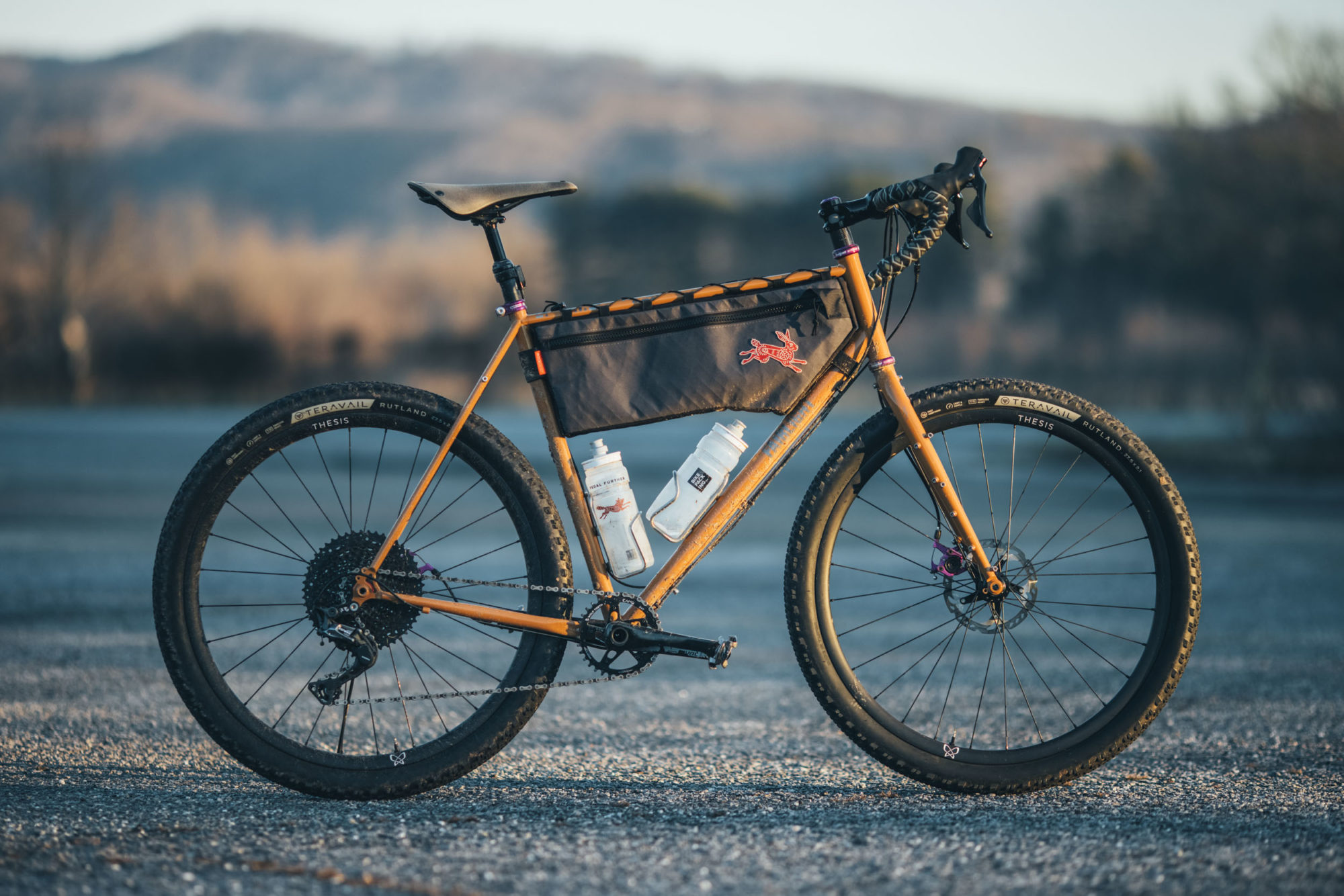
When I initially reached out, I was responded to directly by Dom, who oversees design, aesthetics, and graphics for the brand and its bikes. Dom was formerly lead bike designer and brand manager for Genesis bikes, also out of the UK. The other co-founder, John Reid, ran a London bike shop that specialized in bike fit for the better part of a decade. Fairlight is now a team of nine, but they still only offer a few steel bikes, and they’re not yet a household name, despite the fact that (spoiler alert) I think they probably should be after riding the Faran 2.0 for several hundred miles.
Fairlight currently has three models in their range, each designed in London and made in mainland Europe. Given my obsession with etymology and nomenclature, it won’t surprise regular readers that I felt the need to dig into Fairlight’s product naming. As it happens, each of Fairlight’s bike names come from Englisċ, or Anglo-Saxon vernacular, the earliest recorded form of the English language, spoken in England and Scotland in the early Middle Ages.
Strael comes from Old English strǣl meaning “arrow or dart.” Secan means “to find” or “to seek.” And Faran translates to “to go” or “to travel.” Each of these terms and translations pretty well sums up where each bike falls in Fairlight’s range and how they envision it being used. Perhaps the most well-known of the three is the road-oriented Strael, made famous as James Hayden’s two-time Transcontinental Race-winning rig. It was certainly the bike that people associated with the brand early on. Even so, the Secan 2.0, their dedicated steel gravel bike with carbon fork, is the company’s best-selling model. Last but not least, the Faran 2.0 is a full-steel bike that’s purpose-built for utility and versatility. The Faran is built for carrying stuff and was conceived as a bike that could be kitted out as a randonneur, touring bike, gravel rig, or commuter.
- Highlights
- Frame/fork: Steel
- Angles (L): 72.5° Headtube, 73° Seattube
- Stack/Reach: 630mm/390mm
- BB Drop/Chainstay: 77mm/430mm
- Bottom Bracket: 68mm BSA Threaded
- Hub specs: 12x100mm / 12x142mm, TA
- Seatpost: 27.2mm
- Max tire size: 700C x 50, 650B x 58mm
- Price: £949 (frameset)
Frame Overview
I’m not going to delve too deep into frame specs as there’s a lot going on, and if you want to understand the Faran 2.0 at a granular level, you can take a deep dive into the massive design notes document I mentioned. To summarize, the Faran 2.0 frame has a fair amount of bikepacking-friendly provisions, including rack and fender mounts, three pairs of bottle cage mounts on the main triangle, four-pack mounts on each fork leg, and internal dynamo routing front and back. That’s all well and good for what the frame is made for—loading up and going—but there’s a lot more interesting stuff happening in the tubing and details.
Aside from a standard 27.2mm seat tube and a 4130 rear triangle, the frame is constructed from a mix of carefully selected and custom-formed Reynolds 631 tubing. That includes an aesthetically pleasing ovalized top tube designed to flex under load yet remain laterally stiff. It appears smaller than a typical top tube, which according to Fairlight saves weight, but is structurally superior based on the shape. This is a super nice touch that seems significantly more custom than the £949 frameset price might suggest, or what you get from most stock framesets. And this was clearly responsible for much of the comfort factor I felt from my first ride on this frame, which I’ll get to shortly. Additionally, the downtube is horizontally ovalized at the bottom bracket to resist pedaling forces and ovalized vertically at the top tube to resist braking forces.
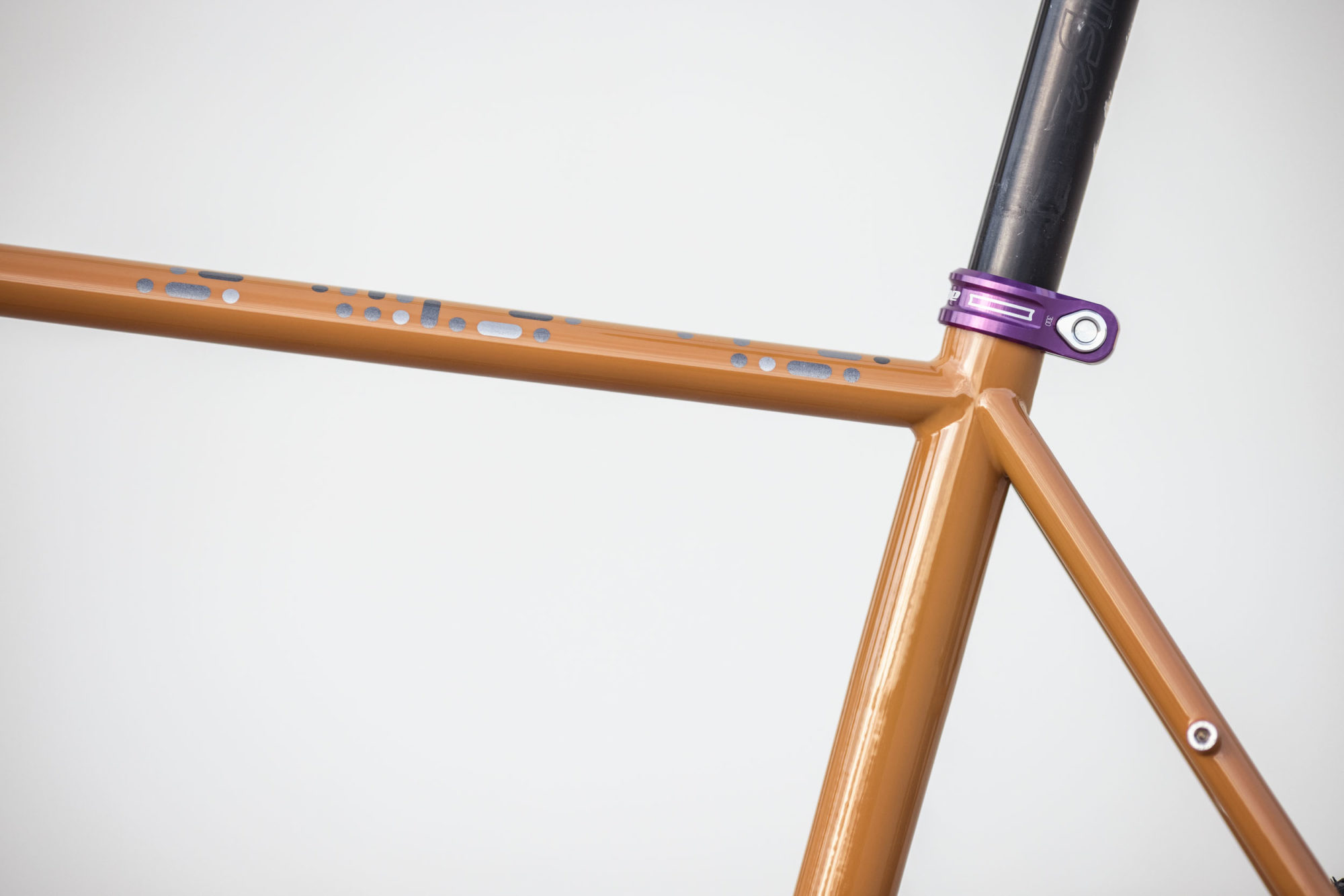
The Bentley dropouts—named after Mark Bentley (aka Bentley Components)—are also pretty slick. They’re made up of laser-cut steel plates, turned stainless steel axle inserts, a CNC-machined aluminum brake mount, and a branded brass plate. They certainly look solid and elegant, and they work as expected. My only complaint would be that I prefer a replaceable derailleur hanger over a solid steel, built-in one. However, most people will likely find this as a positive. If it gets bent on tour, it can be hammered back into place. which I’ve actually done on another bike. I bent the Faran’s hanger once when the bike toppled over onto concrete in the wind (taking one of these photos, no doubt), and it was fairly easy to massage back to true using a standard derailleur hanger alignment tool.
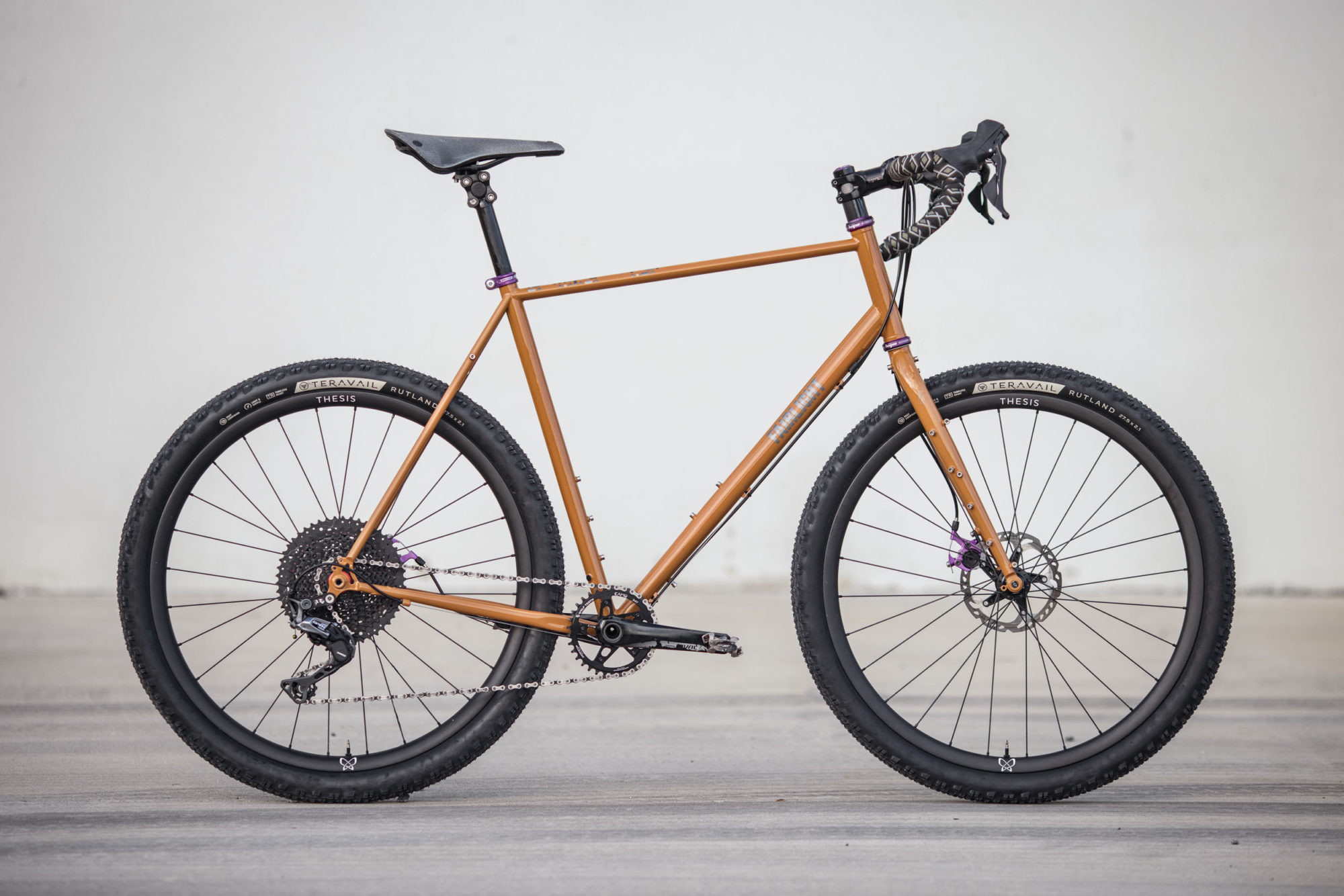
The cable routing is another interesting thing about the Faran and Secan frames. They employed a modular system with 3D-printed, bolt-on cable guides. It’s a nice system, although my biggest complaint about this bike has to do with the routing. I’m simply not a fan of the exposed cable routing that’s typically found on road-oriented bikes. Yeah, I know. It improves shifting performance. But I prefer full cable housing, particularly on an all-terrain dirt bicycle.
Last but not least, the Fairlight graphics came from a unique place. Inspired by the work of German designer Josef Albers, whose name I recognized from design school (and who oddly enough taught at the Black Mountain School in the 1930s, which isn’t too far from me). Ultimately, the design evolved into the abstraction of the word Faran in morse code and appears on this lovely “Winter Bracken” color top tube in shades of silver.
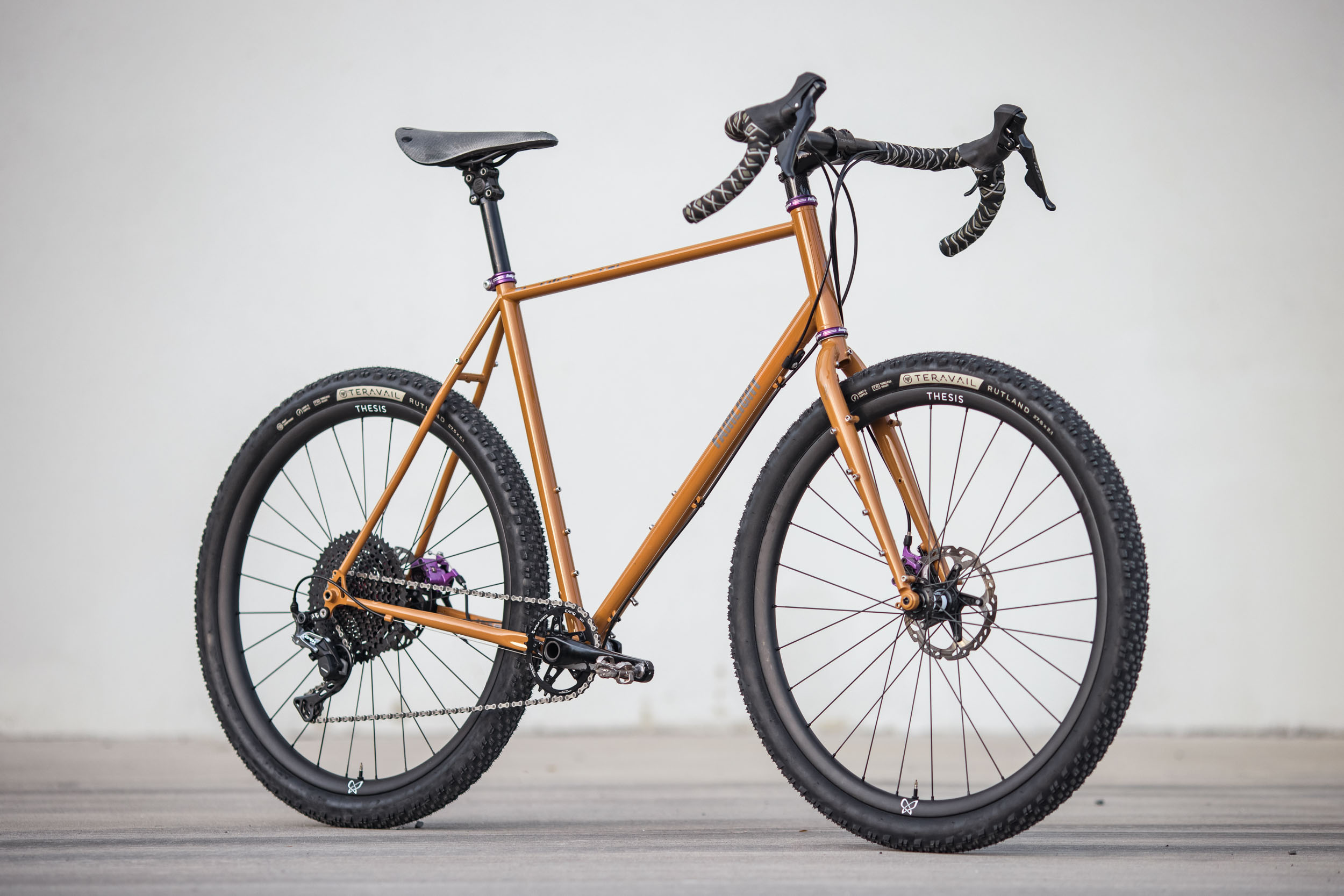
Build Kit
I built up my 58cm Tall Faran 2.0 frame with a select list of components that I had on hand, and I think it was a very solid kit overall. Here’s the full list.
- Frame Fairlight Faran 2.0, 58cm Tall
- Fork Fairlight Faran 2.0
- Wheels Thesis GT27 Carbon 650B Wheels
- Tires Teravail Rutland 27.5 x 2.1, Light and Supple
- Crankset SRAM Rival 1, 170mm
- Chainring Wolf Tooth CAMO, 36T
- Derailleur Shimano GRX with Wolf Tooth GoatLink
- Shifter Levers Shimano GRX
- Cassette Sunrace MX 11-50T
- Bottom Bracket SRAM
- Handlebar PNW Coast, 520mm
- Grips CampAndGoSlow Eastern Rattler Bar Tape
- Headset Hope
- Brakes PAUL Klamper Flat Mount
- Saddle Brooks Cambium, Silver
- Seatpost PNW Pine dropper, 90mm
Tire Clearance
I fitted the Faran 2.0 with Teravail Rutland 2.1” tires on my favorite 650B gravel wheels, the relatively affordable Thesis GT27 Carbon 650B Wheels. With a 27.3mm internal rim width, they’re perfect for this kind of bike and application. The Faran’s rear end has a decent amount of clearance with 2.1” rubber, as you can see in the photos below. Fairlight claims it has clearance for 650B x 58mm (2.3”) or 700C x 50mm (2.0”) tires with a 1x drivetrain, or 700C x 47mm with a 2x. That sounds about right, although it’s worth noting that due to the aggressive bends on the drive side chainstay, the exposed derailleur cable has to cut the corner, making it potentially susceptible to strikes with rocks (or death mud) that’s stuck in the rear tire’s side tread. I never had an issue with 2.1” tires, and considering the rotational direction, the stay would likely clear any debris prior to it contacting the cable. But if you were really pushing the tire size with 2.3” rubber, this could potentially present an issue.
Secan vs. Faran
At this point, you might be wondering what the differences are between the company’s two gravel-ish bikes. Honestly, aside from the Secan having a carbon fork and an oversized 44mm headtube, and the Faran being fully steel, the two are nearly identical. They have the same tire clearances, rear triangle, dynamo integration, and geometry, save a couple of differences, which we’ll get into a bit later. The Secan and Faran also share the same tubeset… kind of. They both have the same tube dimensions, but the Faran uses Reynolds 631 tubing, while the Secan uses 853. Technically, 631 and 853 are the same material, and both frames use identical butting and wall thicknesses in the tubing, making them the same weight. And according to Fairlight, they have the exact same ride quality. However, 853 is heat-treated, which technically makes it stronger. I wasn’t too worried about tubing failure on the Faran, however.
The Faran 2.0 is also a little cheaper than the Secan 2.0, at £949 vs £1,299, respectively. It’s common for many bike brands to have the same bike in differing materials. For example, the higher-end models are often built from a perceived higher quality frame material (e.g. 853 steel) and a full-carbon fork, while the cheaper models typically have a heavier frame (e.g. 4130) and different fork material (e.g. steel). Geometry will stay the same but materials, groupsets, and wheels change to enable lower price points. However, the Faran and Secan relationship is slightly different. It would have been easy for Fairlight to simply introduce a cheaper Secan and not change the geometry at all, but they saw the need to adjust the Faran 2.0 to account for the choice of a more utility-oriented steel fork. So, they ended up rethinking the concept of the bike and adjusting the geometry to take the fork material and riding style into account. The fact it costs less is directly associated with the frame and fork materials (mainly the fork), but for its intended use, the materials are correct, according to Fairlight.
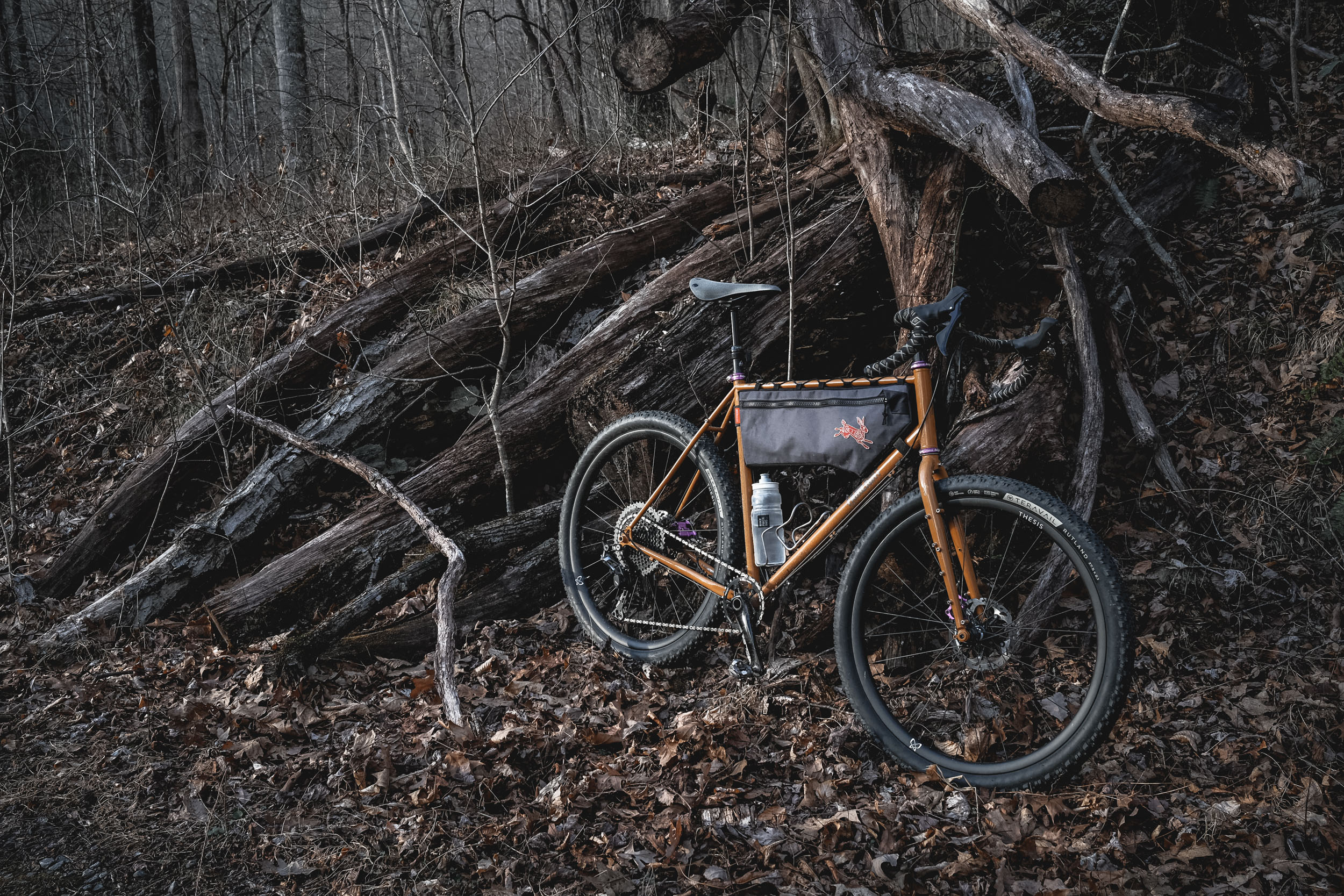
Faran 2.0 Sizing and Fit
Even more interesting are the Secan and Faran 2.0 sizing options. As mentioned, aside from a few small tweaks, the frames are nearly identical. So, they’re both offered in Fairlight’s proportional geometry, which lets riders pick between regular (R) and tall (T) versions of their full run of 51cm to 61cm sizes, for a total of 10 size options. The T options mainly increase the standover and headtube length, thereby increasing stack and shortening reach. This can be advantageous for riders with long legs and short torsos (like me) and those who prefer a more relaxed positioning. Riders with short legs and long torsos might prefer the R geometries, which might also be conducive to more of a performance or racey fit.
I was pretty excited about the tall sizing options and chose the 58cm Tall for this review. Because I have long legs and arms, and a rather short torso, I’m basically nothing short of a freak when it comes to bike fit. With most bikes, I change out stems, move the saddle, and have a ridiculous amount of exposed seatpost. I can honestly say that I’ve never had a bike fit so well out of the box as the Faran. While it appears short in photos due to the tall headtube and standover, it felt genuinely long and modern when I first rode it. Better yet, the tall proportions allow a massive custom half frame bag, made by Rockgeist and shown here, as well as two 750ml bottles in the triangle. Even with the true 58cm seat tube, I was able to run a PNW Pine 90mm seatpost and could have easily fit a 125mm post. I do wish they’d have added internal dropper routing, however.
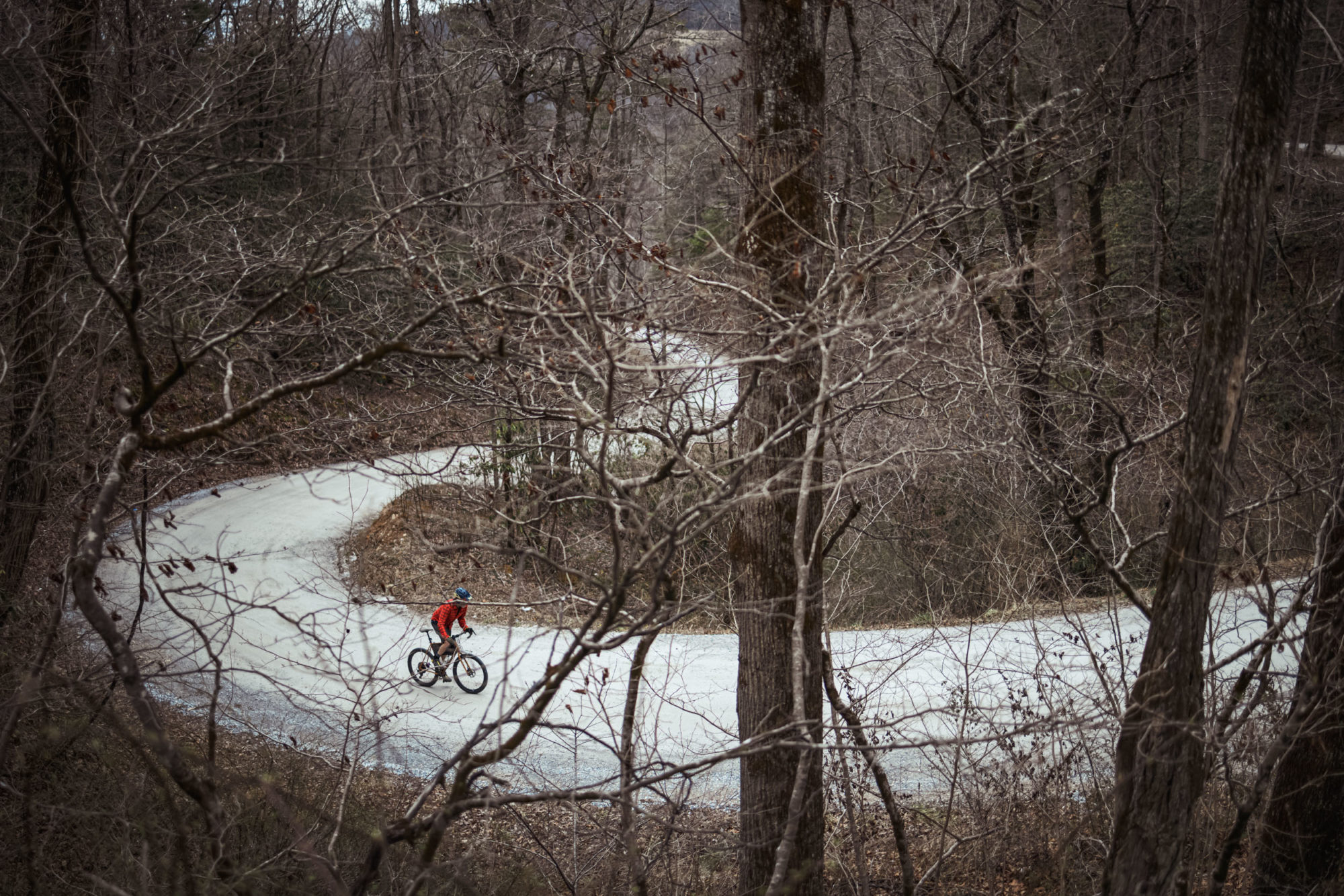
Geometry and Ride Impressions
As for the geometry, the Faran 2.0 (and Secan) both seem to come from road bike stock, at least on paper. I would almost consider them to be on the “road touring” side of things, but with shorter chainstays. Their low bottom brackets and steep angles might lead you to expect a quick handling bike that’s unstable off road. However, that wasn’t at all the case. I think this is at least in part due to one of my favorite characteristics of this bike’s geometry, and one that makes it somewhat unique: its unusually low bottom bracket. The Faran has a 77mm bottom bracket drop, which is a few millimeters lower than most. A more common BB drop is 70mm. The 77mm drop gives the Faran an “in the bike” feel and adds to its stability, both in low-speed climbing, as well as when carving and descending. I’m a big fan of low BBs these days and often use a shorter 170mm crankset to compensate, particularly on mountain bikes.
As mentioned, the main geometric difference between the Faran and the Secan is that the Faran’s front end was tweaked to prioritize stability with a load and front-carrying capability with its steel fork. To accomplish this, they increased the fork rake to 60mm (vs. 50mm on the Secan), which reduces the trail by about 10mm (across sizes). This mid-low trail (~48mm) ultimately makes the steering quicker, which I felt immediately. However, I didn’t find that it was twitchy at all. And while it’s lively when you want it to be, it also seems to disappear under you when pedaling along, in part due to the comfort of the frame, but it’s also markedly sturdy and confident, even when descending fast gravel and dirt roads. It still has a relatively fast steering input when railing downhill, but the Faran’s low BB, very well-tuned steel frame, and room for large tires all work to make it a super comfortable descender. I’d add that its descending prowess is comparable to other gravel bikes in its class, and even more stable than a few I’ve tried. The larger 2.1” tires certainly help, and technically, that wider tire patch raises the trail a little bit.
Overall, the most notable thing about the Faran 2.0 is its ride quality, and I’d probably consider it to be one of the more comfortable steel frames I’ve ridden to date. It’s one of those bikes that’s not tiring at all. It comfortably soaks up road chatter and bumps, yet remains fairly springy and reactive. I found it to be quite impressive in those regards.
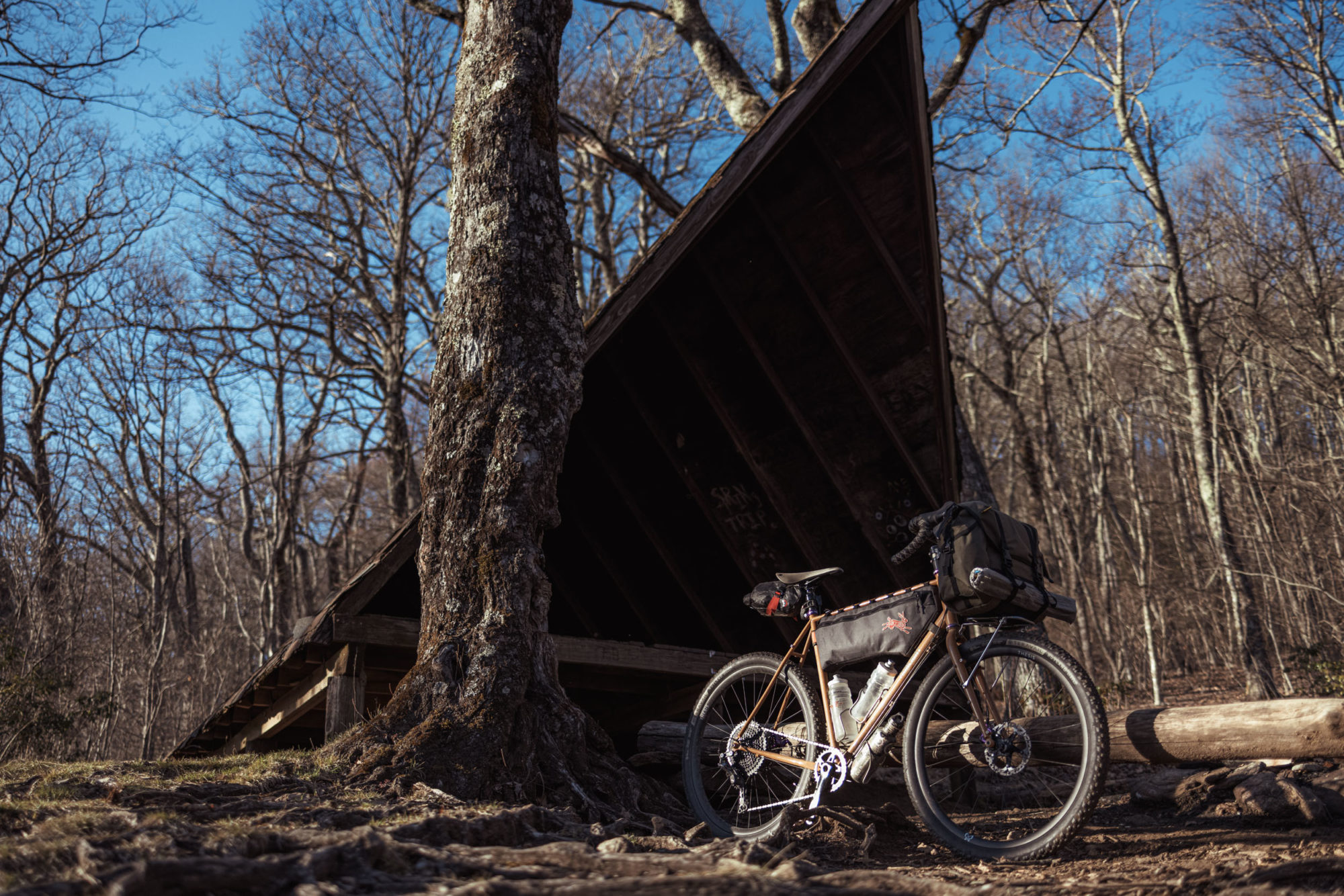
While Out Frontloading
I couldn’t bring myself to pack up the Faran with a true “front-loaded” setup, such as a lowrider rack and panniers. There’s nothing wrong with that kind of packing, but it’s just not my cup of tea. I had initially planned to use a smaller top-opening handlebar bag with two cargo cage bags on each fork leg; after all, it has a four-pack on each leg. However, BXB’s Jay Ritchey mentioned his new custom height top-opening bag and thought it would be a good bike to try it on for size. Essentially, these bags are based on his Goldback design but come in custom heights rooted on the measurement from your handlebars to the top of a mini front rack. This maximizes the bag volume in that space and allows you to lower the center of gravity. The depth and load placement are dependent on the front tire, so in this case, there was a ton of space and a very low placement with the tall head tube and relatively small 650B hoops.
This is absolutely where this bike shines. When first setting out all loaded up, it almost felt like a self-driving vehicle. The Faran 2.0 magically retained its quick acceleration, but I could really perceive how the additional weight up front balanced the otherwise fast steering to give it an incredibly fluid and cruise-control-like feel when pedaling up and down gravel loads. I was delighted at how good it felt. I also think I had just about the right amount of weight on it. As shown in many of these photos, I was loaded up for “heavy overnighter.” I was carrying three beers, water, a non-dehydrated meal, snacks, colder weather sleeping gear, a DSLR, and two lenses, among other things. It was probably the weight equivalent of a long-weekend kit for most folks. The Faran didn’t feel noodly and retained a lot of the spring and comfort that I felt with it unloaded. I think this might be its sweet spot in terms of loads. That’s not to say you couldn’t load it up for a big four-pannier tour, but I think it’s probably best suited for medium-duty touring and gravel bikepacking.
- Model/Size Tested: Fairlight Faran 2.0, Size 58cm Tall
- Actual Weight (as built): 25.86 pounds (11.73kg)
- Actual Weight (frameset): 8.21 pounds (3.72kg)
- Place of Manufacture: Mainland Europe
- Price: £949 (frameset)
- Manufacturer’s Details: FairlightCycles.com
Pros
- Extremely well thought out and constructed frameset
- Quick and plush with just the right amount of compliance and responsiveness
- Dialed geometry for loaded touring and unloaded riding alike
- Aesthetically pleasing design and paint scheme
- Well-thought-out set of load carrying provisions
Cons
- No internal dropper routing
- I’m personally not a fan of lack of cable guides for full cable housing
- Exposed cable at chainstay is a little too close to larger tires
- Lack of replaceable derailleur hanger (not a con for everyone)
- Ideally there would be a three-pack of mounts on both sides of the downtube
Wrap Up
Fairlight’s tagline—Fit, Function, Form—pretty well sums up the two co-founders’ backgrounds, design ethos, and the Faran 2.0 itself from what I can tell from my research and what I’ve gathered during my time with the bike. There’s a whole lot to love about the Faran 2.0, which all points back to good design on many levels. Above all else, the tubeset is impressively plush and responsive and built around a highly versatile geometry and suite of provisions. Sure, I have a few gripes, but most are personal preferences that likely won’t bother everyone.
Who is this bike for, you might be wondering? Anyone looking for an all-road, utility-forward rig that’s equally at home as a randonneur, light touring bike, commuter, or gravel-bikepacker would likely love Fairlight’s Faran 2.0. It’s a road bike at heart, but it can play rough and handles most terrain well. And most impressively, it’s very comfortable. Plus, although it’s all steel, it remains light and not overbuilt, and is a good example of a humble bike at a reasonably approachable price point, despite it being an exemplar of high-end, meticulously considered design.
Related Content
Make sure to dig into these related articles for more info...
Please keep the conversation civil, constructive, and inclusive, or your comment will be removed.














